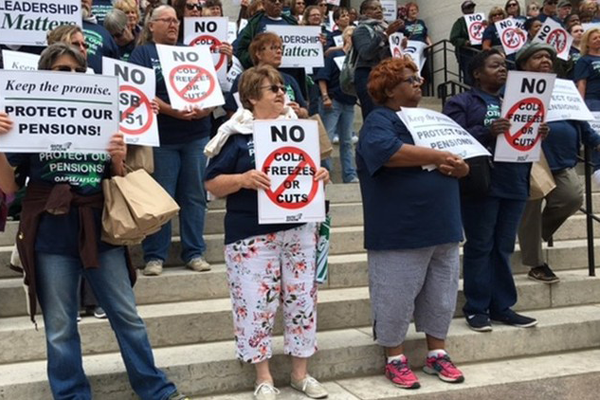
Excerpt from the Dayton Daily News
The Ohio Public Employees Retirement System trustees on Wednesday voted to change its assumed rate of return on its $101.4 billion in assets — a move that may eventually impact benefits for its 1 million members and retirees.
The new assumed rate of return will be 7.2 percent for OPERS pension fund and 6 percent for its health care fund, down from 7.5 percent and 6.5 percent, respectively.
When a retirement system lowers its assumed rate of return, it causes its unfunded liabilities to balloon. That could force trustees to ask lawmakers to authorize benefit cuts for retirees and or government workers.
“Lowering the actuarial rate of return could affect benefits for retirees and working members, so OPERS does not take this step lightly,” said OPERS Executive Director Karen Carraher in a written release. “Determining what steps to make after changing the rate will be a challenging decision.”
Last year, OPERS officials asked lawmakers to pass a bill to cut the cost of living allowances as a way to shore up the long-term finances of the fund. The bill is still pending in a House committee.
In April 2017, the State Teachers Retirement System of Ohio voted to indefinitely suspend the COLA for retired teachers and the School Employees Retirement System also reduced COLA benefits.
Currently, the Ohio Police & Fire Pension Fund is restructuring retiree health care benefits, beginning in January 2019.
None of the pension systems are required by law to provide health care. That’s important to note as the systems strive to keep the funds viable over the long term. The focus will always be on keeping the pension checks flowing — providing health care is secondary.
Last year, all five public employee retirement systems in Ohio trimmed back their assumed rate of returns. The rates now stand at: 7.2 percent for OPERS, 7.45 percent for STRS, 7.5 percent for SERS, 7.75 percent of Ohio Highway Patrol Retirement System, and 8.0 percent for OP&F.
Combined, all five systems have roughly 2 million members, beneficiaries and retirees and more than $200 billion in assets.

